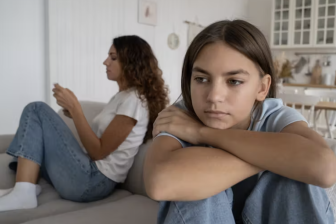
How addressing our young kids’ COVID-19 learning loss is a matter of child’s play
COVID-19 disruptions have had a distinct, devastating and potentially enduring impact on our youngest school-aged learners, especially those who were already behind in early language, literacy and numeracy understandings. The pandemic has also taken a toll on children’s social and emotional health.
Data from Alberta suggest many children have lost a year or more in expected progress. There is no question of the urgent need for educational attention that will mitigate COVID-19 learning loss.
Suggestions put forth to help children have included lengthening the school day, focusing on phonics instruction for early reading, intensive tutoring and having children repeat grades to ensure better beginnings and readiness for literacy and numeracy development.
But imposing narrow academic expectations may not align with children’s readiness to learn, and may produce only short-term learning outcomes.
Guided play — play that is guided by teachers at school — can be an important part of children’s learning, especially for children who are entering kindergarten up to about Grade 3. Parents or caregivers could consider ways to adapt such guided play in the home.
Guided, purposeful play
Guided or purposeful play is play that reflects a sense of learning intent.
It could mean encouraging a child to hold their pencil or paint brush to develop a pincer grip. Kids need to develop a good pincer grip and achieve fine motor control for printing, cutting, folding and pasting.Guided play in the classroom could look like teachers being on hand to explicitly direct children’s gaze to a key idea and explain patterns or sequences when they are manipulating shapes or objects like blocks or a bucket of buttons. Buttons become tools for learning through sorting or categorizing by shape, color and size. Buttons are wonderful for making sequences and patterns — and learning how to quickly recognize: “How many?” Shape and pattern represent the underpinnings for letter recognition, spelling and numeracy understandings.
Five areas of child development
A growing body of research finds that both free imaginative play and guided, purposeful play are associated with stronger early language, literacy and numeracy outcomes, and social and emotional health benefits. Children gain these benefits as they learn the give-and-take of play with others.
These five related key areas (or domains) of child development should be targeted through play: numeracy and spatial recognition; fine motor skills; language and word knowledge; cognitive skills and memory; social and emotional learning. Of these, perhaps the fine-motor-language nexus is the most critical.

Hetty Roessingh, Author provided
Learning through such play develops embodied cognition and the foundations for literacy and numeracy understandings.
Practising with loose parts
In classrooms, once underlying concepts and skills are taught, children can extend and practice these through centre or station play where child choice, imagination and creativity direct and drive activities like tinkering, taking apart structures and playing with loose parts. Blocks, puzzles and everyday objects like clothes pegs, tweezers, measuring devices, scissors, pencils and crayons are all part of the teacher’s play toolbox in the early years’ classroom.
With some flexibility, these strategies can be adjusted for children in kindergarten up to Grade 2. They can be transferred and extended to imaginative activities like post office (recognizing names and numbers) or grocery store (reading labels and lists) or dress-up and socio-dramatic play.
There will always be a range of children’s readiness for learning. Especially in COVID-19 recovery, teachers will need to adapt and accommodate, and be smart at planning games and play activities through an assessment lens, and planning the instructional cycle accordingly.
Importance of dialogic talk
Talking with children is also critical when they are involved in guided play as a way of helping them to develop their language and world knowledge.
Adults can strategically introduce more words relevant to academic learning (“academic words”) when children are involved in guided play: For example, words like “construct” or “structure” versus “build” when playing with blocks. The words can be accompanied by a definition, a synonym and paraphrasing by saying: “In other words …”
Other times, adult talk needs to be more explicit and direct when children are involved in guided play. Some examples could be explaining a learning or memory strategy while playing a card game or dealing with numeracy concepts when playing a linear board game. What researchers call “math talk,” and understanding of the rules of the game matters in transitioning to more independent play and practice with their peers.
Embedding questions that involve making an inference or a prediction, inviting the back and forth of collaborative and elaborative “ping-pong” conversations further support children’s language development, cognition, understanding of their world and their place in it.
Listen as British educational broadcaster and writer Sir David Attenborough explains the plight of endangered species to his young listeners. Attenborough pitches his talk to the “just right” level of each child, and introduces words that will be helpful in academic learning — like danger, protect, extinct (and extinction) and precious.
Gradually building enriched oral vocabulary knowledge matters in transitioning to the level of academic literacy expected around Grade 4.
Flexible, playful plans
A well-rounded, balanced approach to early childhood education through play involves both child-led and adult-led play and allows for both unstructured and structured activity. It targets all five domains of child development that teachers need to assess and monitor for progress, again through simple, playful tasks and games.
Teachers know they are facing a range of readiness for learning in their
classrooms. Let’s welcome our little ones back to school with a flexible, playful plan for learning and interacting with the school community they have been missing for too long.
As for how to spend tens of millions of tax payers’ dollars governments are keen to allocate to closing the COVID-19 learning gap? Reducing class size or providing a well-trained teacher’s assistant may provide our best bang for the buck.![]()
Hetty Roessingh, Professor, Werklund School of Education, University of Calgary
This article is republished from The Conversation under a Creative Commons license. Read the original article.




